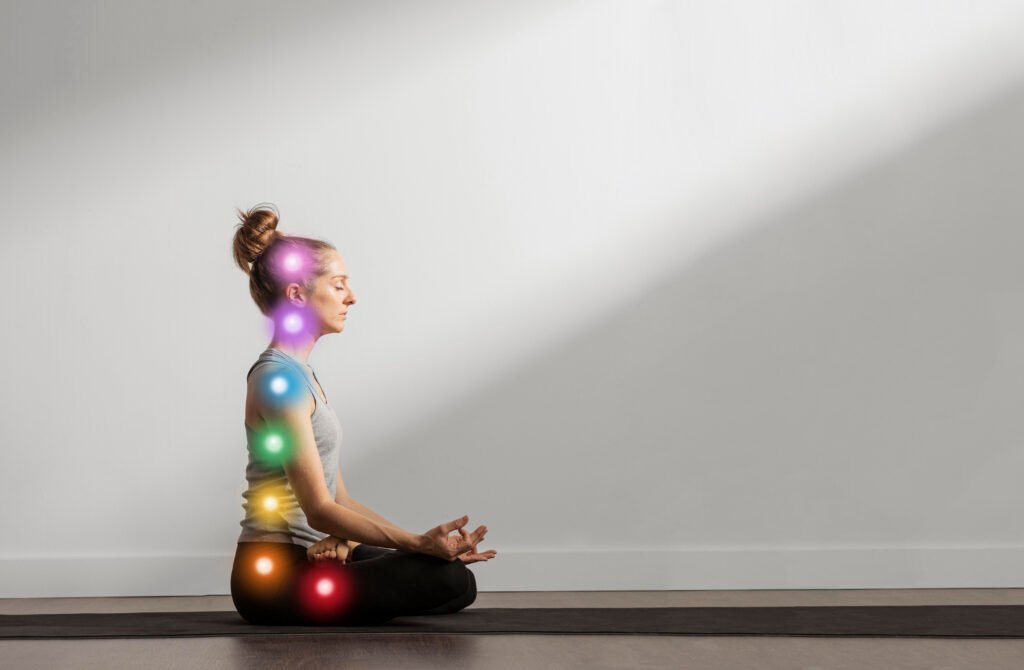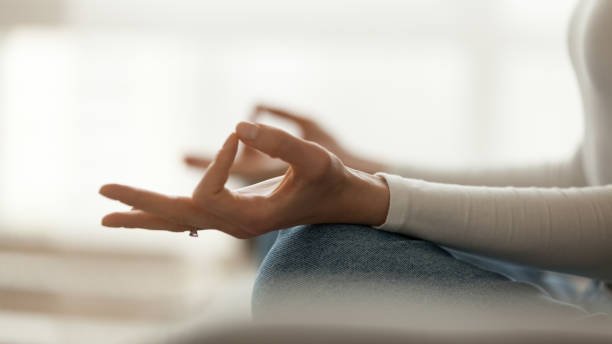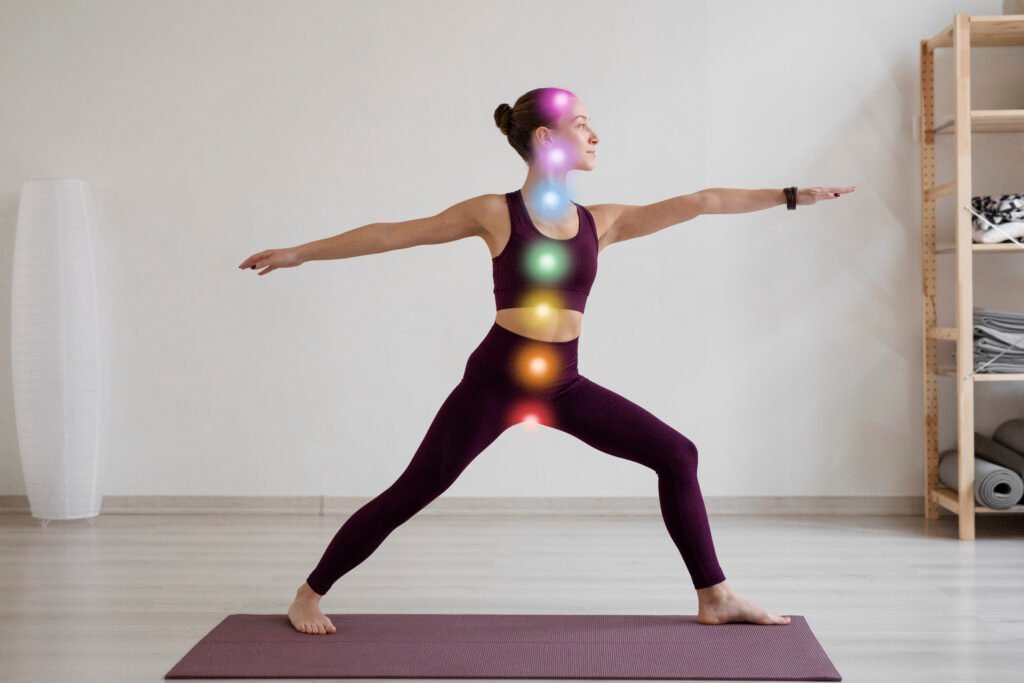In a world that glorifies the hustle, we’re constantly running on a treadmill of notifications, deadlines, and digital noise. We live in our heads, planning the next move, replaying the last one, and rarely ever just being. The result? A pervasive sense of disconnection—from ourselves, from the present moment, and most critically, from our own bodies.
What if there was a way to press pause? A simple, science-backed technique to quiet the mental static and find a sanctuary of calm within yourself?
Enter the body scan meditation. It’s not about emptying your mind or achieving a mystical state. It’s a grounded, accessible mindfulness practice that guides you on a journey of rediscovery, helping you to re-inhabit your own skin and unlock a wealth of benefits for your mental and physical health.

Table of Contents
What Exactly Is Body Scan Meditation? A Journey, Not a Task
At its heart, body scan meditation is a formal practice of mindfulness where you systematically guide your attention through your entire body, region by region. You act as a gentle, curious observer, noticing the array of physical sensations that are present in each moment—warmth, coolness, tingling, pressure, contact, tightness, or even the absence of sensation—all without judgment.
Think of it less like a medical scan searching for problems and more like slowly shining a warm, gentle spotlight of awareness from the tips of your toes all the way to the crown of your head. As the light moves, you simply notice what it illuminates.
The crucial element is the attitude you bring to the practice: one of open curiosity and acceptance. The goal isn’t to change what you feel or to force relaxation. It’s to simply be aware of what is. Paradoxically, it is through this radical act of non-judgmental acceptance that profound relaxation and healing can occur.
The Science-Backed Benefits: More Than Just Relaxation
While the practice feels intuitive and gentle, its effects are powerful and deeply rooted in neuroscience and psychology. Incorporating a regular body scan practice can be genuinely life-altering.
Drastically Reduces Stress and Anxiety
This is the most celebrated benefit, and for good reason. When you’re stressed or anxious, your sympathetic nervous system—the “fight or flight” response—is in overdrive. Body scan meditation activates the parasympathetic nervous system, the body’s “rest and digest” mode. By focusing intently on physical sensations, you anchor your mind in the present, interrupting the cycle of anxious thoughts about the past or future. Research consistently shows that mindfulness practices like the body scan can lower cortisol (the primary stress hormone), leading to a state of calm that permeates your daily life.
Deepens Self-Awareness and Interoception
Do you ever notice at the end of the day that your shoulders are hiked up to your ears or your jaw is clenched? We often carry tension without even realizing it. The body scan cultivates interoception, which is the scientific term for the sense of the internal state of your body. By regularly checking in, you become exquisitely aware of your body’s subtle signals. This allows you to catch stress, fatigue, or discomfort early and respond with care—by stretching, taking a break, or simply breathing—before it escalates.
Sharpens Focus and Concentration
In an age of constant distraction, our ability to focus is a superpower. Body scan meditation is like a workout for your brain’s attention centers, particularly the prefrontal cortex. Each time your mind wanders (and it will!), the gentle act of noticing the distraction and patiently returning your focus to the sensations in your body strengthens your “attentional muscle.” This enhanced focus translates directly to improved productivity, better listening skills, and a greater ability to be present in your work and relationships.
Improves Sleep Quality
If you’ve ever laid in bed with a racing mind, you know how frustrating sleeplessness can be. A body scan performed before bed is a powerful tool to quiet the mental chatter. It provides a structured, calming activity for your mind to focus on, preventing it from spiraling into worry. By systematically attending to and “letting go” of each body part, you release accumulated physical tension, signaling to your nervous system that it is safe to power down and enter a state of deep, restorative sleep.
Fosters Emotional Regulation
Emotions are not just abstract feelings; they have distinct physical signatures. Anger might feel like heat in your chest, fear like a knot in your stomach, and sadness like a heaviness in your limbs. The body scan teaches you to observe these physical sensations without being swept away by the emotional story attached to them. This creates a crucial “pause” between feeling an emotion and reacting to it, giving you the space to choose a more measured and compassionate response.
Your Step-by-Step Guide to a Foundational Body Scan
Ready to try? Find a quiet place where you won’t be disturbed for 15-20 minutes. The beauty of this practice is its simplicity.
- Get Comfortable: The most common position is lying on your back on a mat, bed, or carpet. Let your arms rest at your sides, palms facing up, and your feet fall naturally apart. You can place a pillow under your knees to support your lower back. If lying down makes you sleepy, you can also practice sitting upright in a chair with your feet flat on the floor and your spine straight but not stiff.
- Settle In: Gently close your eyes or lower your gaze. Take a few deep, intentional breaths. Feel the weight of your body making contact with the surface beneath you. Give yourself permission to arrive in this moment.
- Begin at the Toes: Bring the spotlight of your awareness to your left foot. Narrow your focus to the toes. Can you feel each toe individually? Notice any sensations of warmth, coolness, tingling, or contact between them. If you feel nothing, simply notice the absence of sensation. Breathe into this awareness.
- Move Up the Leg: Slowly guide your awareness from your toes to the sole of your foot, the heel, the top of the foot, and the ankle. Continue this gentle scan up your lower leg, knee, and thigh, noticing any and all sensations as you go.
- Scan the Other Side: Once you reach the top of your left leg, gently shift your entire focus over to the toes of your right foot. Repeat the same gradual, curious scanning process all the way up your right leg.
- Journey Through the Torso: Now bring your awareness to your pelvic region—your hips, buttocks, and groin. Move up into your abdomen, noticing the gentle rise and fall with each breath. Scan your lower back, mid-back, and upper back. Continue to your chest and shoulders, observing any tightness or openness.
- Sweep Through the Arms: Guide your attention down your left arm, through the upper arm, elbow, forearm, wrist, and into the hand and each finger. Then, repeat the process for your right arm and hand.
- Focus on the Neck and Head: Move your awareness to your neck and throat. Then, scan the back of your head, the scalp, your forehead (letting it soften), your eyes, cheeks, nose, and finally, your mouth and jaw. See if you can release any tension held in the jaw.
- Embrace the Whole: After scanning each individual part, expand your awareness to feel your body as a single, unified whole. Sense the entire field of sensation, feeling the life and energy that animates you from head to toe.
- Gently Conclude: Bring your awareness back to your breath for a few moments. When you’re ready, slowly begin to wiggle your fingers and toes. Gently open your eyes, taking in your surroundings. Take a moment to notice how you feel before getting up.

Overcoming Common Hurdles: What to Do When It Feels Hard
It’s called a “practice” for a reason. You’ll encounter challenges. Here’s how to navigate them with kindness.
- “My Mind Won’t Stop Wandering!” Welcome to the club! This is the nature of the mind. The goal isn’t to have zero thoughts. The practice is the moment you realize you’ve wandered and you gently, without criticism, guide your attention back. Each return is a success.
- “I Keep Falling Asleep.” This is very common, especially when lying down. It’s a sign you’re probably sleep-deprived! Try practicing while sitting in a chair. You can also try it at a time of day when you’re naturally more alert.
- “I Don’t Feel Anything.” That’s perfectly okay. Sometimes, parts of our body are “quiet.” The practice is to notice the absence of sensation with the same curiosity as you would notice tingling or warmth. It’s all valid information.
- “I Feel Agitated or Uncomfortable.” If you encounter an area with intense or unpleasant sensations (like chronic pain or emotional distress), you have options. You can try “breathing into” the sensation, imagining your breath could create space around it. If it’s too much, simply broaden your focus back to the whole body or to a neutral area like your hands until you feel settled. Never force yourself to stay with overwhelming sensations.

The Foundation of Modern Mindfulness
The body scan isn’t just a standalone technique; it is a cornerstone of the highly respected Mindfulness-Based Stress Reduction (MBSR) program. Developed in the 1970s by Dr. Jon Kabat-Zinn, MBSR integrated mindfulness practices into mainstream medicine and psychology. The body scan was a primary tool used to help patients with chronic pain and stress-related conditions reconnect with their bodies in a new, more compassionate way. The success of this program has been documented in countless scientific studies and has paved the way for mindfulness to be accepted globally as a legitimate tool for health and well-being. To learn more about the origins and research, you can explore the resources at the UMass Memorial Health Center for Mindfulness, the institution where MBSR was born.
Conclusion: Your Body Is a Home, Not Just a Vehicle
In our frantic pursuit of what’s next, we often treat our bodies like vehicles to carry our brains around. We forget that our bodies are the only home we will ever truly have. The body scan meditation is a profound act of coming home. It is a declaration that you are worthy of your own attention, that your present-moment experience matters, and that within you lies a deep well of calm and resilience waiting to be discovered.
It doesn’t require special equipment or beliefs—only a willingness to show up, be still, and listen.
Your Invitation to Begin
Don’t just let this be another article you read. Let it be an invitation. Your journey into mindfulness starts not tomorrow, or next week, but with your next breath.
Tonight, before you sleep, or tomorrow morning when you wake, set aside just 10 minutes. Find a comfortable spot, close your eyes, and simply begin with your toes. You don’t have to do it perfectly. You just have to do it.
Let us know in the comments how your first body scan feels! Your experience could inspire someone else to begin their own journey home.